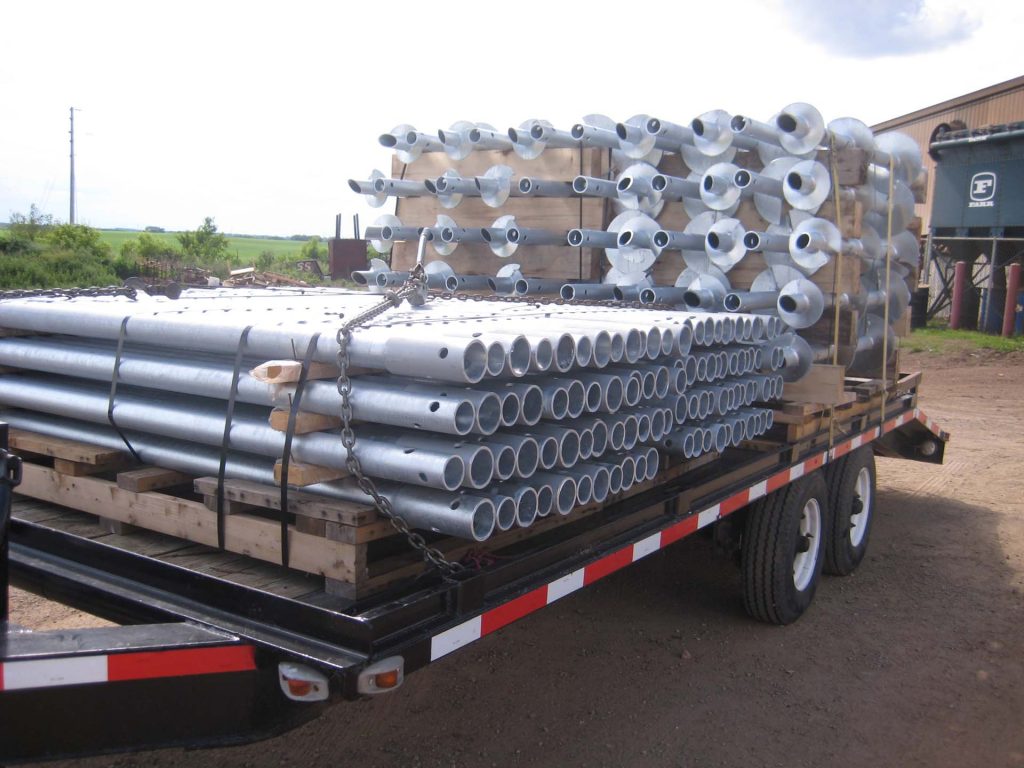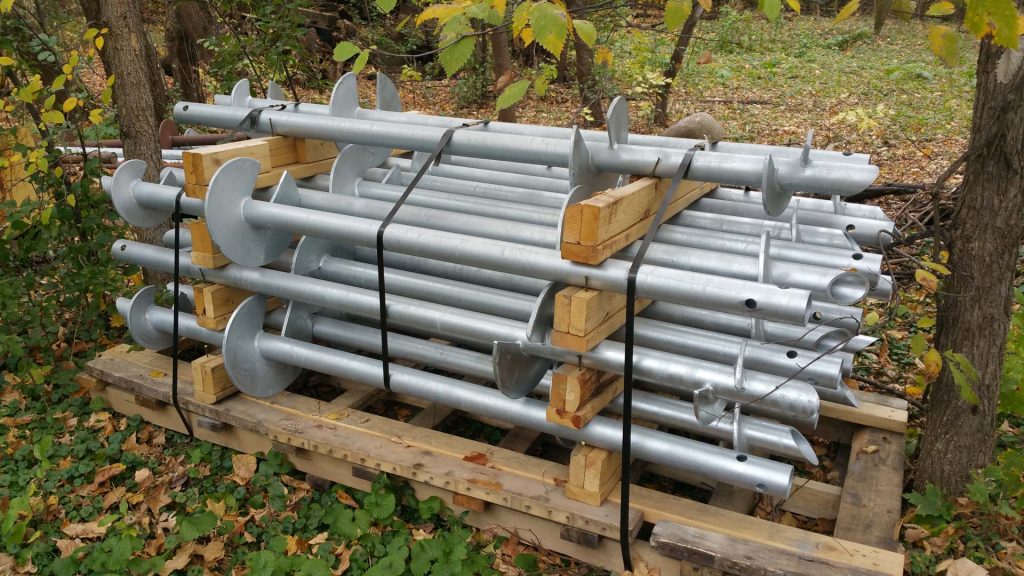HELICAL PIER TECHNOLOGY
Helical piers have been around for over a hundred years, but have only become more widely known within the last 20 years or so. Helical piers are basically a steel pipe or square shaft that has one to four steel plate “helices” welded onto it. The helical pier is screwed into the ground with a hydraulic torque motor. Depending on the weight that needs to be supported and on the soil composition, the helical pier can go as deep as necessary by adding extensions to the lead that has the helices on it. For light structures like a deck or screen porch a single lead is often enough to replace a concrete footing.
Here are some of the benefits of helical piers:
- Can be built on immediately after installation and require no cure time like concrete.
- Cause almost no vibration or disturbance of nearby structures. Can be installed right next to existing foundations without impact.
- Almost no environmental impact. Can be installed in open water or bogs and marshes without worrying about causing harm to water quality or animals.
- Require no digging or soil disposal like traditional footings.
- Invulnerable to frost movement. The helices lock into good soil well below frost depths and the smooth shaft gives frost heaving soils nothing to grab on to.
- Removable.
Helical piers have all the right answers for many of Minnesota’s foundation problems!
Helical Pier Applications
Helical piers have numerous residential and commercial applications. When building a structure located in an area with poor soil conditions, it is necessary to properly anchor the foundation. Helical Piers are an ideal solution because they can be installed to a controlled depth until stabile soil is reached. Applications include support for boardwalks and docks, foundation repairs, new foundations, golf course bridges, light poles, towers, etc.
Foundation Support Questions and Answers
Q: Why do concrete foundations/footings fail in Minnesota?
A: There are many possible answers to this question, but here are a few. Building foundations may fail as a result of poor construction such as inadequate compaction or lack of reinforcing steel. They may also fail due to erosion which can undermine the foundation and cause it to collapse or as a result of frost heaving or hydrostatic pressure depending on soil conditions and water issues. Traditional concrete post footings (like those commonly used for decks and porches) often fail because of poor construction or because of above-average levels of frost heave. Certain clay soils which are common in Minnesota can heave tremendously when saturated and then frozen.
Q: What are helical piers/screw piles?
A: Helical piers have been around for nearly two hundred years, but have only become more widely utilized within the last 20 years or so. Helical piers are basically a steel pipe or square shaft that has one to four steel plate “helices” welded onto it much like an auger. The helical pier is screwed into the ground with a hydraulic torque motor and depending on the weight that needs to be supported and on the soil composition, the helical pier can go as deep as necessary by adding extensions to the lead that has the helices on it. For light structures like a deck or screen porch a single lead is often able to replace a traditional concrete footing and provides a truly frost-proof alternative.
Q: How are helical piers/screw piles better than traditional footings?
A: Helical piers have the following benefits over other foundation technologies:
- frost-proof
- water-proof
- cause minimal vibration when installed
- do not require digging or concrete work in most applications
- can be built on immediately unlike concrete
- since they are an engineered foundation solution, helical piers are approved for use by all municipalities
- can be easily removed in the future
Q: What do helical piers cost?
A: This question is dependent on too many variables (load capacity, soil conditions, depth, quantity, etc.) to answer adequately here. With a phone call and some simple measurements we can usually give you an estimate for your project within a day or two.


